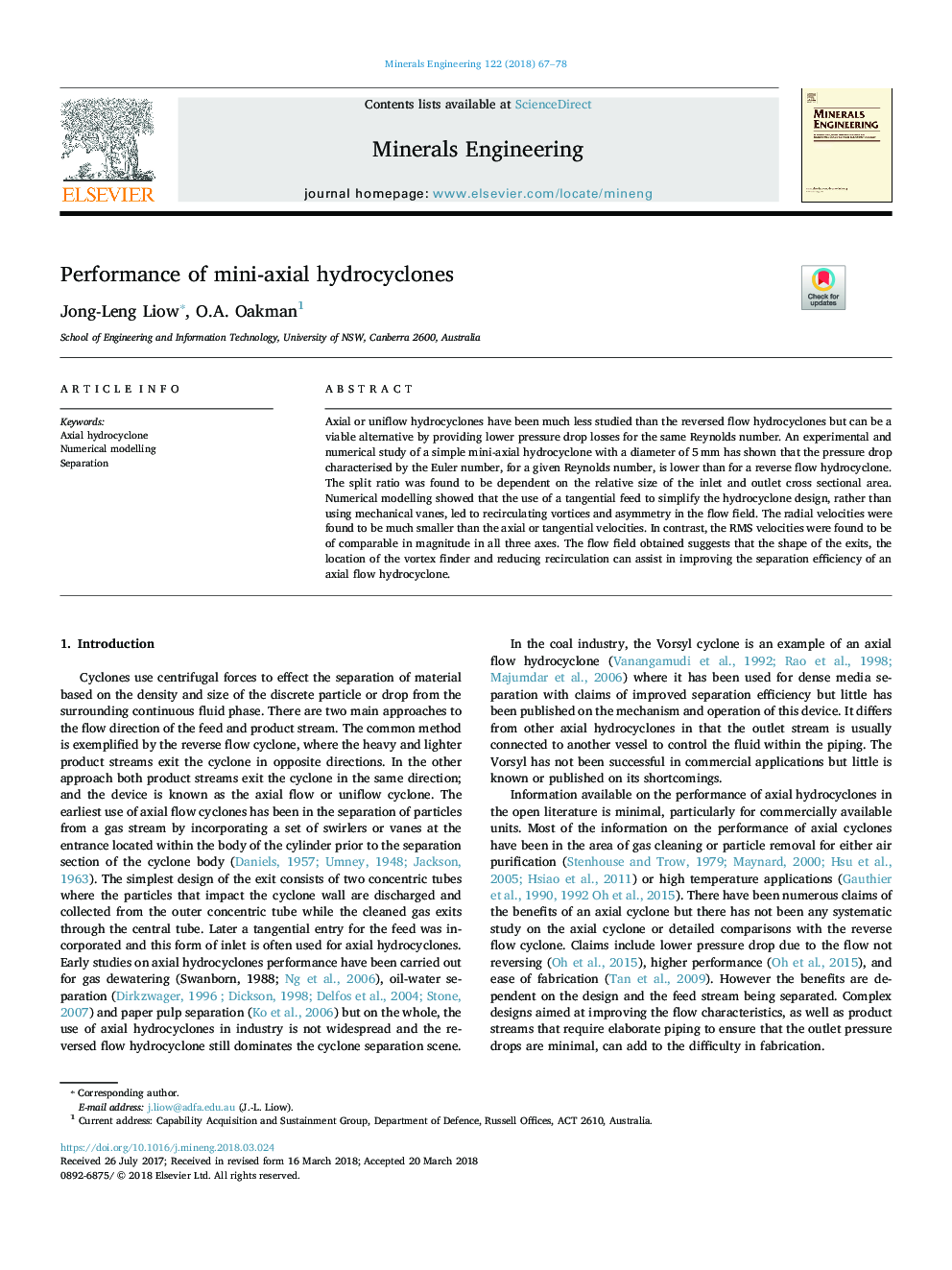| Article ID | Journal | Published Year | Pages | File Type |
|---|---|---|---|---|
| 6672375 | Minerals Engineering | 2018 | 12 Pages |
Abstract
Axial or uniflow hydrocyclones have been much less studied than the reversed flow hydrocyclones but can be a viable alternative by providing lower pressure drop losses for the same Reynolds number. An experimental and numerical study of a simple mini-axial hydrocyclone with a diameter of 5â¯mm has shown that the pressure drop characterised by the Euler number, for a given Reynolds number, is lower than for a reverse flow hydrocyclone. The split ratio was found to be dependent on the relative size of the inlet and outlet cross sectional area. Numerical modelling showed that the use of a tangential feed to simplify the hydrocyclone design, rather than using mechanical vanes, led to recirculating vortices and asymmetry in the flow field. The radial velocities were found to be much smaller than the axial or tangential velocities. In contrast, the RMS velocities were found to be of comparable in magnitude in all three axes. The flow field obtained suggests that the shape of the exits, the location of the vortex finder and reducing recirculation can assist in improving the separation efficiency of an axial flow hydrocyclone.
Keywords
Related Topics
Physical Sciences and Engineering
Chemical Engineering
Chemical Engineering (General)
Authors
Jong-Leng Liow, O.A. Oakman,
